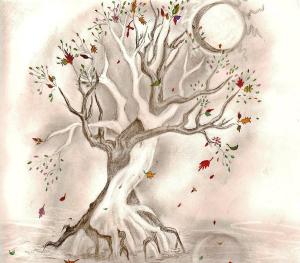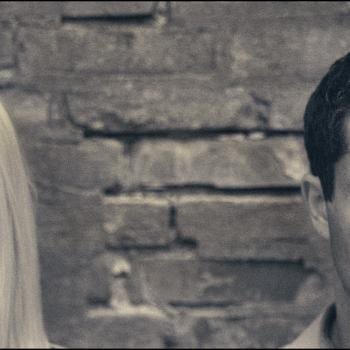
I struggle to know how to manage the differences in marriage. On the one hand I want to compromise and work as a team. But other times I feel like I’m losing myself. Especially now that we seem to have some differences in how we approach our beliefs and church membership. How do we know how to strike the right balance?
Great question… you’re addressing the inescapable tension between “me” and “we” that all relationships have to dance and wrestle with. In one word, the answer is “differentiation”… which we spent an entire semester studying in my marriage and family therapy training. The ability to stay connected while still being apart. Boundaries. Negotiations. Realistic expectations. Self soothing. Tolerating the differences our partners are bound to present. There isn’t a super easy answer to this so I will turn to the words of my colleague, Dr. Randy Moss who does a beautiful job of at least contemplating this concept poetically.
Today’s guest post is written by Dr. Randy K. Moss. Opinions shared on guest posts may not completely reflect the positions of the blog’s author.
Dr. Moss received his PhD from BYU in Counseling Psychology in 1996 and has been working in the behavioral health field since 1985 with emphasis on co-occurring and complex disorders. He trains and consults nationally on trauma and trauma-informed care, Feedback Informed treatment, implementation science and system transformation. He is married with four children and three grandkids, is a generational Mormon within a mixed faith marriage. He describes his faith transition in the following way: Intellectual transition of twenty years, emotional separation of ten, spiritual release of three.
…and they shall become as one flesh…..So goes the expectation of marriage.
Often we hear two refrains about relationships- ‘growing together’ and ‘growing apart.’
The common interpretation fails to encompass the profundity and essential elements of embedded understanding. I want to sharpen a vision of what they mean when presented in couples therapy and across pulpits.
The partner’s tearful avowal suggests a permanent fusion of flesh. “We were to grow together;” entangled, single trunk, one mixed jumble of branches and leaf. A family unit that has dissolved its hosts, lost its separate roots and pretends a singularity is less stable, less healthy and less flexible. Growing together does contain shared elements but is deeper. It indicates a covenant between two – necessitating effort, struggle, expansion, and change.
Basic growth is the opposite of stagnation, of remaining fixed. I hear the anguish when a partner finds that the growth has led to different branching and flowering. The hurt fails to acknowledge the first covenant in its plainness. The partner accuses the other of fraud, deceit, or subterfuge. This is especially powerful in religious context where one grows beyond or outside the initial garden box of beliefs. Such surprise leading to distress and, in some cases, repugnance, is telling of the emptiness of the shared growing. Together became an assumption of givens – not the real expression of connection and understanding. The seed planted together didn’t know the shape of the tree – just that it would grow and be a tree. There was no fraud. The other was not deceived. The other was blinded by the false expectation of ‘grow together’ meaning mirrored entities.
Growing apart is not the same as reaching different heights while being faithful to the original covenant. Growing apart is a pattern of growth that has two major factors.
- Component one is the most devastating; neglect. Assumption, prescribed expectation and misaligned loyalty are the henchmen of neglect. The loyalty to an attachment object wrapped in theology or doctrine blinds the other to marriage between two fleshes and not an ethereal idea. Neglect fails the partners. One is labeled, the other left bereft of real growth. The ceremony was idealist seeds promising to create a family, a third entity, by becoming one flesh in making children but covenanting to individual and collective growth.
- The second component of growing apart is sunlight hogging. Growing outside the shade deflecting rays of light filtered is anger, rejection and more light hogging. Straight grains of wood result from the growth together. All the light, all the resources make for twisted trunk and less secure roots. I am saddened when one party will forego their marriage to the person when the content of her/his growth is outside the garden box of youth. The covenant was to grow together, not fuse or abandon the forest. Does the love of time and shared experience evaporate like summer sprinkles in the face of change in attitude toward the garden box. Maybe the fraud is that the marriage ceremony was to an ideology not a person, to an interpretative lens instead of the values of honesty, love, respect, and commitment. The deceit might fall on the neglecting, light-hogging partner who might be ready to eject the flesh for an idea.
The wood of such a tree is knotted, ornamental but lacks strength and integrity.
Ultimately I believe the answer we are getting at is the simultaneous reaching towards acceptance of self and acceptance of other. The better able a couple is at striking this balance, the better differentiated they are. I would encourage the reading of the Seven Principles for Making Marriage Work by John Gottman.
Natasha Helfer Parker, LCMFT, CST can be reached at natashaparker.org and runs an online practice, Symmetry Solutions, which focuses on helping families and individuals with faith concerns, sexuality and mental health. She hosts the Mormon Mental Health and Mormon Sex Info Podcasts, writes a regular column for Sunstone Magazine and is the current president of the Mormon Mental Health Association. She has over 20 years of experience working with primarily an LDS/Mormon clientele.
Read more at http://www.patheos.com/blogs/mormontherapist/search/randy+moss#duqCT5fxO6iBby6I.99












